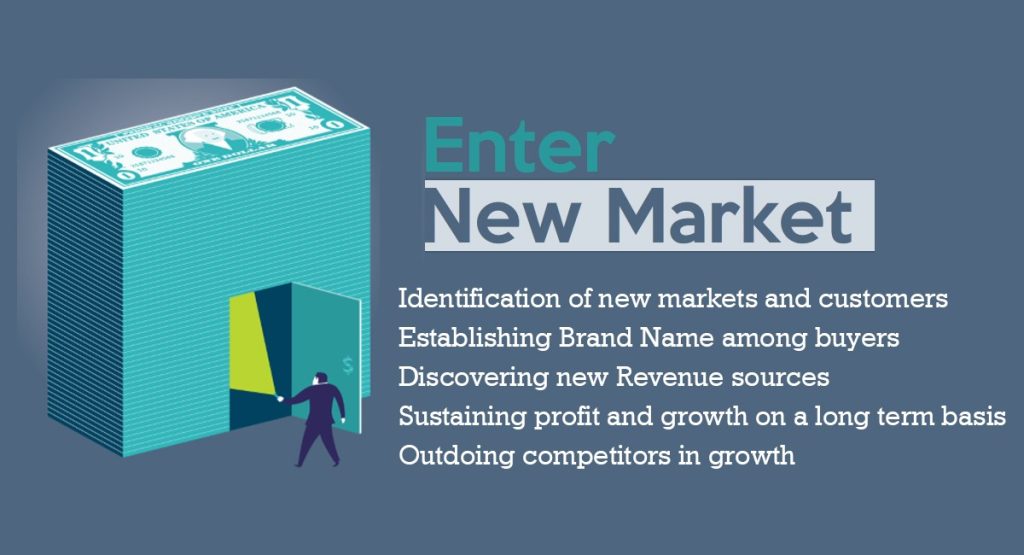In today’s fast-paced business world, exploring new market areas has become more critical than ever. Companies are constantly looking for ways to expand their reach, connect with fresh audiences, and boost their growth. Whether you’re a small business owner, an entrepreneur, or part of a large corporation, stepping into new markets can open doors to exciting opportunities.
But what exactly does “new market area” mean? Simply put, it refers to untapped regions, demographics, or industries where your business can thrive. It could be a different city, a neighboring country, or even an entirely new customer base within your existing market. The key is identifying where your product or service can bring value and cater to the needs of a new group of people.
Expanding into new markets isn’t just about increasing profits. It’s also about innovation, staying ahead of competitors, and building a stronger, more adaptable brand. However, it requires careful planning, market research, and a clear understanding of the challenges involved.
What Is a New Market Area?
A new market area refers to an untapped or underserved segment of the population, industry, or geographic region where a business can introduce its products or services. This can include:
- Geographical Expansion: Entering new countries, regions, or cities.
- Demographic Expansion: Targeting new age groups, income brackets, or cultural communities.
- Industry Diversification: Venturing into an entirely different industry or sector.
The essence of exploring a new market lies in recognizing the opportunity to fulfill unmet needs or offer superior alternatives to existing options.
Why Explore New Market Areas?
Expanding into new markets offers a plethora of benefits, including:
- Increased Revenue Streams: Tapping into a new customer base can significantly boost sales.
- Risk Diversification: Reducing reliance on existing markets mitigates risks associated with economic downturns or market saturation.
- Enhanced Brand Recognition: Expanding your footprint establishes your brand as a global or diverse entity.
- Access to Innovation: New markets often inspire fresh ideas, product development, and unique approaches to problem-solving.
- Economies of Scale: Higher production volumes in response to increased demand often lead to reduced per-unit costs.

Why Exploring New Market Areas Is Important
Exploring new market areas is crucial for businesses that aim to grow, adapt, and stay competitive in today’s dynamic world. Expanding geographically is not enough; it’s also about finding new opportunities to serve different customer needs, diversify income streams, and future-proof your business.
- Opens Doors to Growth: New markets bring fresh opportunities. By tapping into unexplored areas, businesses can increase their customer base, drive revenue, and achieve long-term growth. For example, entering an emerging market can help a company take advantage of growing demand before competitors do.
- Reduces Dependency on Existing Markets: Relying solely on one market can be risky. Economic downturns, changing consumer behavior, or increased competition can negatively impact profits. Expanding into new markets helps spread risk and ensures your business remains resilient.
- Encourages Innovation: When exploring new markets, businesses often adapt their products or services to meet the needs of a new audience. This fosters innovation and leads to improved offerings that can benefit the company overall.
- Strengthens Brand Visibility: Entering new markets enhances brand recognition. A strong presence in multiple regions or industries boosts credibility, making your business more appealing to customers and potential partners.
- Keeps You Ahead of Competitors: In a competitive landscape, staying stagnant can be a disadvantage. Expanding into new areas allows you to get ahead of competitors by reaching untapped audiences and positioning your brand as a leader in the field.
Steps to Enter a New Market Area
Conduct Market Research
Understanding the target market is paramount. Effective market research involves:
- Demographic Analysis: Identifying the size, preferences, and behaviors of your target audience.
- Competitive Landscape: Assessing existing competitors, their strengths, weaknesses, and market positioning.
- Regulatory Environment: Research laws, taxes, and compliance requirements that could affect your operations.
- Cultural Nuances: Understanding local customs, traditions, and societal norms that influence purchasing behavior.
Define Your Value Proposition
Your product or service must address a specific need or gap in the new market. Clearly define:
- What makes your offering unique?
- How does it solve a problem or fulfill a need?
- Why the target market should choose you over competitors.
Develop a Go-to-Market Strategy
A well-thought-out strategy ensures a smoother entry into the market. Key components include:
- Market Entry Mode: Decide whether to establish a physical presence, partner with local entities, or operate remotely.
- Pricing Strategy: Tailor pricing to the purchasing power and expectations of the new market.
- Distribution Channels: Identify the most effective ways to deliver your product or service.
- Promotional Activities: Craft campaigns that resonate with local audiences.
Build Local Partnerships
Collaborating with local businesses, influencers, or organizations can:
- Facilitate quicker entry.
- Provide insights into the local market.
- Boost credibility and trust among the local population.
Pilot the Market
Before a full-scale launch, test the waters by:
- Launching a pilot program.
- Collecting feedback from early adopters.
- Making necessary adjustments based on real-world data.
Invest in Talent and Infrastructure
Hiring local talent familiar with the market dynamics and investing in infrastructure ensures a robust foundation for growth.
Monitor and Adapt
The work doesn’t end after entering the market. Continuous monitoring and adaptation are crucial to sustain success. Use key performance indicators (KPIs) to track progress and refine strategies.

Challenges in Exploring New Market Areas
Cultural Differences
One of the most significant hurdles is bridging cultural gaps. Misunderstanding local customs and values can lead to marketing blunders and alienation of the target audience.
Regulatory Barriers
Every market has regulations, ranging from taxation to product standards. Navigating these complexities requires diligence and, often, legal expertise.
Logistical Challenges
Managing supply chains, distribution networks, and customer support in unfamiliar territories can be daunting.
Financial Risks
Expanding into a new market demands substantial investment. Without proper planning, businesses risk significant financial losses.
Competition
Established local competitors often have a deeper understanding of the market and loyal customer bases, making it challenging for new entrants.
Case Studies: Successful Market Expansions
Starbucks in China
When Starbucks entered the Chinese market, it adapted its business model by:
- Offering tea-based beverages alongside coffee.
- Redesigning stores to create a luxurious and social ambiance.
- Educating consumers about coffee culture through marketing and in-store experiences.
Netflix in India
Netflix tailored its offerings to the Indian market by:
- Producing local content in regional languages.
- Introducing affordable subscription plans.
- Leveraging partnerships with telecom providers for broader reach.
Tesla in Europe
Tesla’s entry into Europe involved:
- Building gigafactories to reduce costs and delivery times.
- Partnering with European governments to promote sustainable energy initiatives.
- Tailoring its product lineup to meet European regulations and consumer preferences.
Emerging Trends in Market Expansion
Digital-First Approaches
The rise of e-commerce and digital platforms has made it easier for businesses to enter new markets without a physical presence.

Sustainability as a Selling Point
Consumers are increasingly prioritizing environmentally conscious brands. Highlighting sustainable practices can enhance market acceptance.
Personalization
Leveraging data analytics to personalize offerings ensures better engagement with the target audience.
Technological Integration
From AI-driven insights to blockchain for transparent supply chains, technology plays a pivotal role in successful market expansion.
Common FAQs About Exploring New Market Areas
What does it mean to explore a new market area?
Exploring a new market area means identifying and entering a different region, demographic, or industry to offer your products or services. It could involve expanding to a new city, targeting a new age group, or even introducing your offerings to an entirely different industry.
Why should businesses explore new market areas?
Expanding into new markets helps businesses grow, diversify their customer base, and reduce reliance on existing markets. It also opens up opportunities for innovation, boosts brand visibility, and keeps businesses ahead of competitors.
How do I identify the right market to expand into?
Start with thorough market research. Analyze customer needs, competition, market size, and economic conditions. Consider whether your product or service fits the needs of the new market and if there’s enough demand to justify the move.
Do I need to change my product for a new market?
Sometimes, yes! Adapting your product or service to suit local preferences, cultural norms, or regulations can increase your chances of success. For example, you could offer different packaging sizes or features tailored to a specific market.
How can small businesses explore new markets with limited resources?
Small businesses can start by targeting niche markets or expanding digitally through e-commerce platforms. Collaborating with local partners and leveraging online marketing are cost-effective ways to test and enter new areas.
How long does it take to see results from market expansion?
The timeline varies depending on the market and your strategy. While some businesses see quick wins, others may take months or years to establish a strong presence. Patience and consistent effort are key.
Is it worth the effort to explore new markets?
Absolutely! While it takes time, planning, and effort, entering new markets can unlock growth opportunities, increase brand visibility, and, in the long run, create a more resilient business.
Conclusion
Exploring new market areas is a bold yet rewarding endeavor that requires meticulous planning, adaptability, and a deep understanding of the target audience. By following the outlined steps, addressing challenges proactively, and leveraging emerging trends, businesses can position themselves for long-term success in diverse markets.
As the global landscape continues to evolve, staying informed and agile will be key to unlocking the vast potential of new markets. Whether you’re a small business owner or a multinational corporation, the opportunities are boundless for those willing to venture beyond familiar territories.
